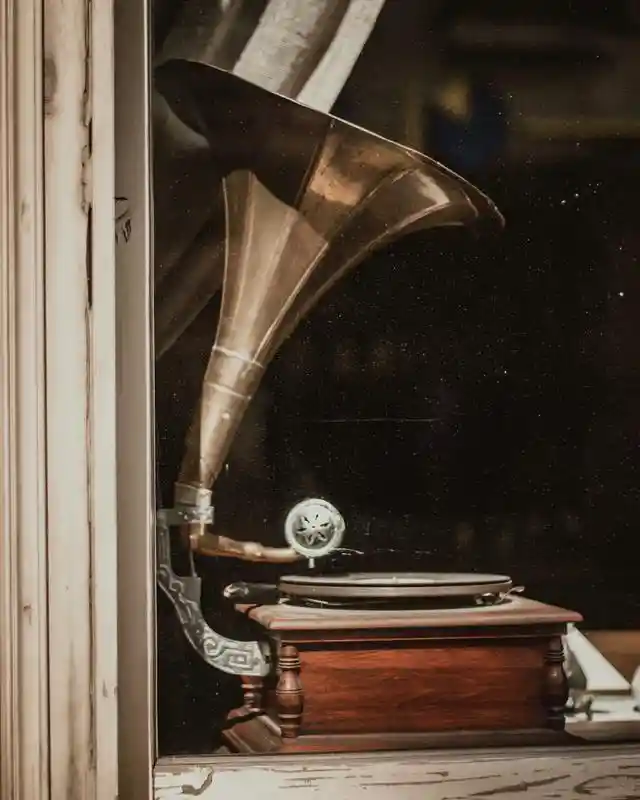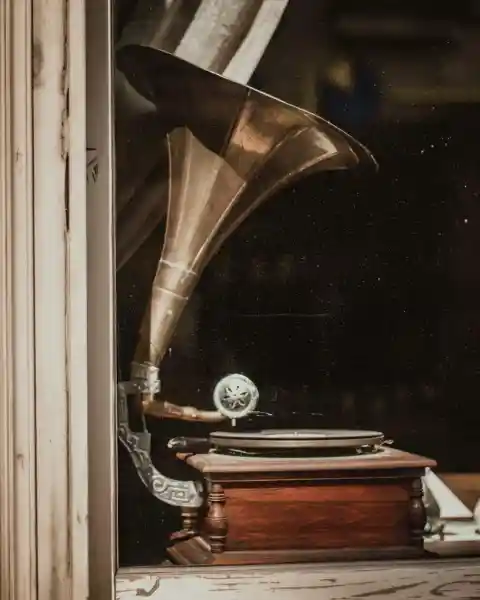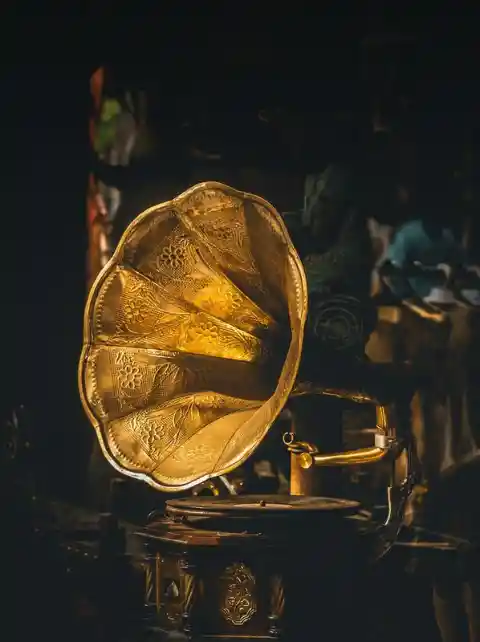Wherever you are, thanks to the advent of the Internet and smartphones, you can play music anywhere. But long ago we only had records for that.


Au clair de la Lune, Mon ami Pierrot. You have to listen carefully to hear it, but those words from a well-known song Édouard-Léon Scott de Martinville are recorded with his "phonautograph" in 1860.
The oldest known recording of a human voice
On that device was a horn to sing or talk into, which vibrated a hair, which in turn traced over a paper with soot on it. So the phonautograph "wrote down" sound waves, but Scott de Martinville had no way to play them back as well.
But in 2008 it was announced that researchers had succeeded: they had converted the waves of the hair back into sound, making the oldest known recording of a human voice available on the Internet.


Thomas Edison applied for a patent
But the phonautograph was not yet a record player. That came closer when Thomas Edison applied for a patent in 1878 for the 'phonograph', which could record and play back sound. This was done with a needle that carved a soundtrack into a rotating cylinder with tin foil on top. Because the foil was fragile, Edison switched to a wax layer after some experimentation.
Edison's very first recordings are unfortunately lost, but by his own account he sang the children's song Mary had a little lamb, its fleece was white as snow, and everywhere that Mary went, the lamb was sure to go.
Retained records
Real, flat-playing records were marketed by German American Emile Berliner, who patented the gramophone in 1887. His first recordings are gone, but a catalog survives of records he sold in 1889. These were made of guttapercha, rubbery stuff, and played on a hand-powered device with a cardboard horn.
The first record in the catalog featured a pious text: the Lord's Prayer. Other items on offer included: a record of German proverbs, the children's story Struwwelpeter ("Pete the Greasehound"), and a ballad, Der Kampf mit dem Drachen.